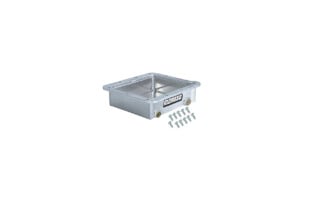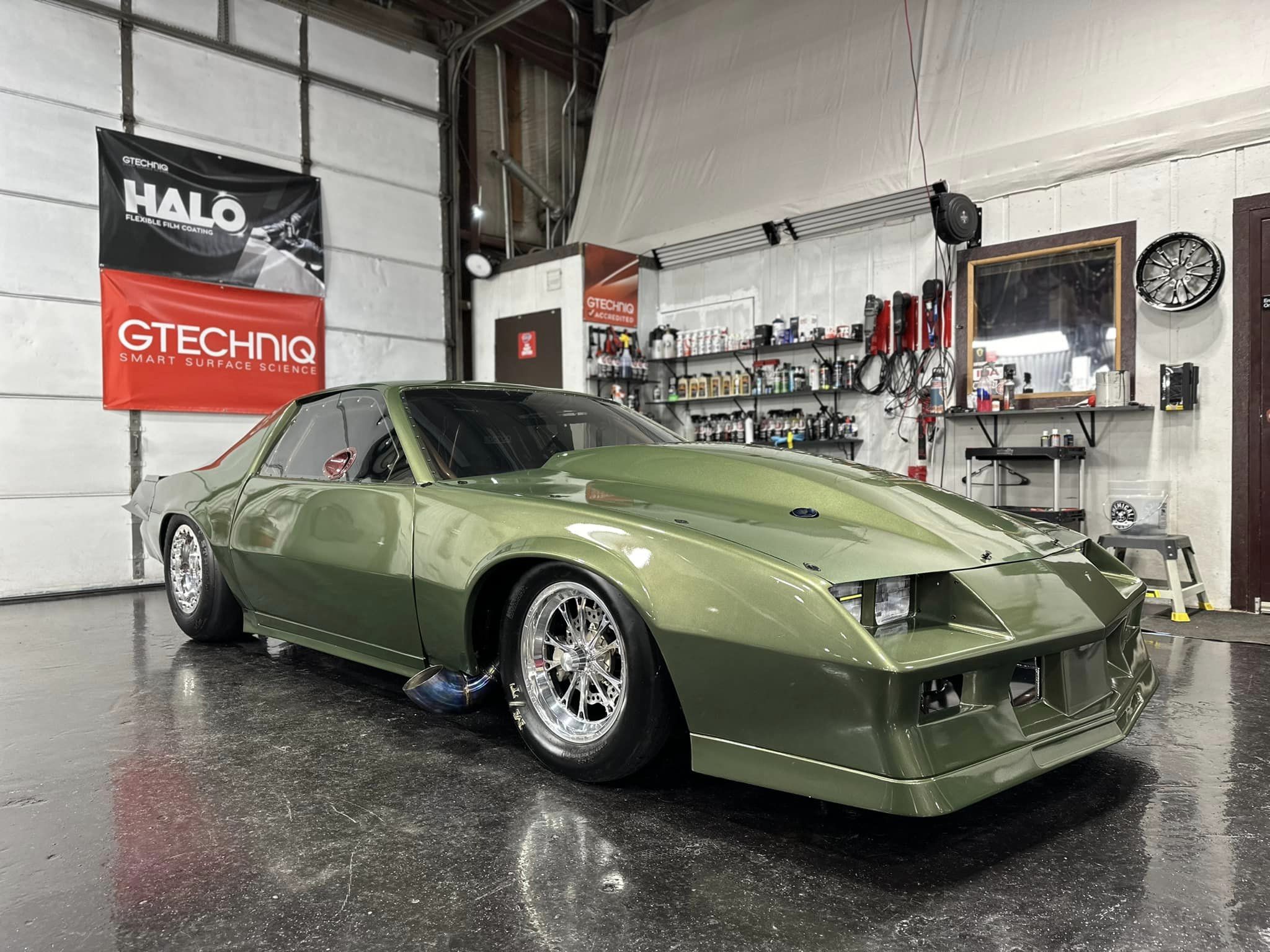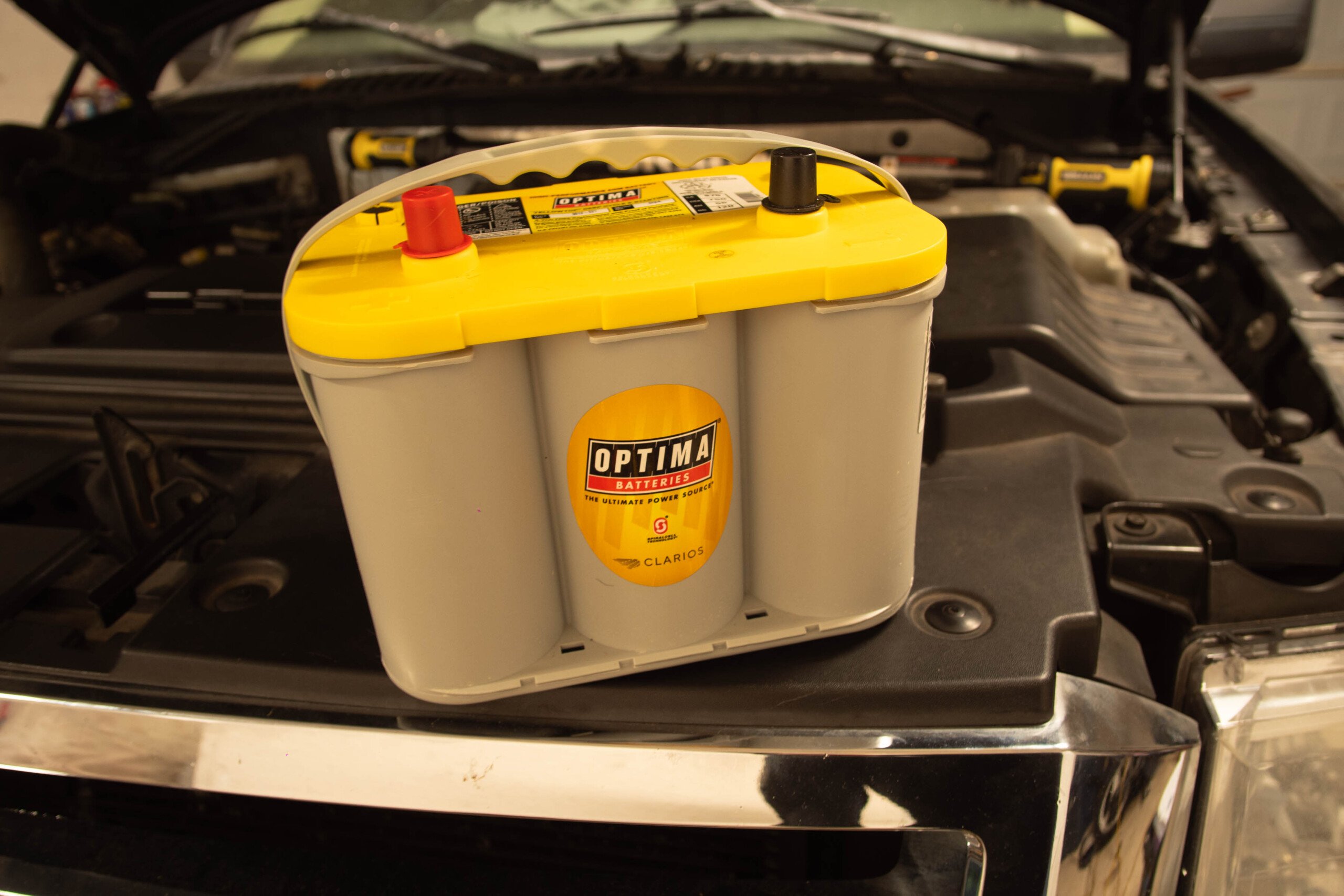One of the most important aspects for a properly operating engine is the air/fuel ratio. An air/fuel ratio that is too rich will waste horsepower, and one that is too lean will cause certain destruction to your engine. Although in these difficult economic times you may be tempted to cut costs while working on your project car, don’t skimp on the most crucial parts and accessories.
One of those critical gauges, the wide band air/fuel ratio gauge, has up until recently been an expensive one. Thankfully, however, FAST has released a budget wide band air/fuel ratio gauge that allows you to tune on the road without breaking the bank. “We wanted to find to find a way to get wide band tuning into the hands of everybody,” says Matt Patrick of Comp Cams. “The hand held units have been a big step in that direction, though can be an expensive. We had already designed the processors for dynos and had those in place for a couple of years now – they have proven to be very reliable units. So we figured we could attach a simple gauge to it so it is a nice, low cost kit that allows someone to go out and tune their car with.” We happily went to work installing one on our Project “Riced Rat Rod” 240sx.
What About Renting a Dyno?
Renting a dyno is expensive, especially considering the fact that you need to keep renting one every time you make a change on your car. Tuning on the street is much more efficient as it allows you to tune in a ‘real world’ environment. EFI and carburated vehicles alike need a correct air/fuel ratio, and FAST’s new budget wide band air/fuel ratio gauge makes tuning on the street possible as well as affordable.
When building our 240sx, we were required to do it on a budget. Our small block Chevy utilized Dart’s budget 400 CI Chevy SHP short block with a Pro 1 top end kit. It was also affixed with a Holley 830 CFM carburetor, Comp Cams valve train, TCI balancer, and a Pertronix ignition. With 525 horsepower naturally aspirated on the engine dyno, the air/fuel ratio readings were perfect. But once off the dyno and mounted into a lightweight 5 speed equipped chassis, the tables turned. Our air/fuel ratios were still spot-on during wide open acceleration, however, they suffered from partial throttle hiccups.
Since this car is so light and has great gearing from our Tremec TKO-600, the throttle blades were barely opening under low throttle acceleration. Also, we noticed that while on the highway our gas mileage was less than desirable. With these issues in mind, we were looking to the FAST air/fuel gauge to help remedy these problems.
The FAST Budget Wide Band Gauge
FAST Budget Wide Band Kit PN-#170634
• 2-1/16th Analog White Gauge
• Reads from 8:1 to 16:1
• Real Time Monitoring
• Bosch Wide Band O2 Sensor With Internal Heater
• Processor For Converting The O2 Sensor Voltage
• Weld On Bung
The FAST air/fuel ratio gauge is just that. It is a simple to install and easy to read gauge that displays in real time. The 2 1/16 inch gauge reads from 8 to 16 to 1, and is back lit for night time monitoring. The gauge hooks up to a FAST processor that relays the signal from the wide band O2 sensor that is mounted in the exhaust. “The voltage that outputs from the processor directly correlates to a given air fuel ratio,” says Patrick. “In the instructions, there is a formula that allows you to wire it into a data-logger or standalone. Using that, it will allow you to calibrate the formula to anything you want.” The wiring is a simple ground, plus constant and switched 12 volts.
For the installation, we went back to our local Nissan performance shop, Mckinney Motorsports. The hardest part of the installation is the drilling and welding of the O2 sensor bung. Before removing any exhaust components, check the location of where you want to mount the 02 sensor in the exhaust to make sure there is no interference. FAST recommends installing the sensor before the catalytic converters. If this isn’t possible, then they recommend installing them at the next closest location. Keep in mind that you will see some light variance in your readings if you install the sensor after the catalytic converter.
Be sure to mark the sensor location with a legible pen so you know where to drill when the exhaust is removed. Also, do not install the gauge in the bottom of the exhaust pipe. Not only will this break the O2 sensor into pieces at the first bump you hit, but it will also collect condensation in the sensor which will damage it.
Mack and Gary then removed the H-pipe that was affixed to our Hooker LT-1 style headers and placed it onto the vice where a small drill hole was cut and deburred to snugly fit the O2 sensor bung. A few minutes with the TIG welder and the bung was secured for life at a 2 o’clock position on the passenger side. Two T-bolt clamps and a rear axle back flange later and the exhaust was back in. The O2 sensor came pre-lubed with anti-seize to make future wide band removal easy.
The exhaust is being installed and the O2 sensor is being screwed in place.
With the O2 sensor installed, we began routing the wiring for the processor. We fed everything into the car through the gaping hole in the firewall that once housed the OEM engine wiring harness, and we fit the processor safely behind the stereo. FAST provides more than enough line to allow you to run the processor wherever you would like. I asked Matt about the little plug on the back of the processor and he explained, “That plug is what we use for programming the processor. This allows us to program the output voltage however we want or for lamda. We also have the ability to adjust the sensitivity of the gauge, depending on the application.”
The O2 sensor plug was then routed down to the male end of the O2 sensor. Next, Mack and Gary simply slid the two pieces together and flipped the gray latch over the tab to lock it in place. They secured the wiring away from the exhaust so it would not hang and get burnt.
The gray U-shaped tab will flip forward to lock the connectors together.
The only task that remained was the wiring. The gauge comes with its own plug that gets connected to the wires on the processor. Going for an extra clean and durable connection, Mack soldered all our connections and covered them in shrink rap. As we show in the mock-up diagram above, the black and brown wires from the processor connect to the black wire from the gauge plug, which then gets connected to a chassis ground. The red wire from the processor connects to the gauge’s blue wire and runs to a 12-volt switched source. The brown wire from the gauge plug is for a 12 volt constant, though you can also wire it to the red/blue wires like we did.
The orange processor wire and blue gauge wire are the final wires that join the two electronics. The orange wire from the processor can also be used as a signal reference for any electronics that feature a O2 sensor plug-in. The white wire on the gauge plug is our last wire, which connects to a headlight trigger source for night time illumination. Since we lacked a home for the wide band gauge at the time of our installation, we temporarily placed it snugly in the pocket below the stereo.
Installation Done and Time for Testing
With the installation completed, we flipped on the power switch located on the dash. The gauge swept from 8 to 16 and back again, proving to us that the gauge was operating properly. After a couple of seconds of waiting for the O2 sensor’s internal heater to start working, we fired up the car. The gauge instantly responded and read the air/fuel ratio as real time. It was a pleasing sight as our idle air/fuel ratios were floating right on target in the 14 to 14.5:1 area.
After idling out of the parking lot, we made our way to the streets. As the carburetor came out of the idle circuit around 1500 rpm under cruising speeds, we noticed that the accelerator pump was introducing too much fuel into the main circuit and was dropping the air/fuel ratios into the 10.5:1 range. Not requiring much accelerator pedal effort to get the car moving, we knew this was going to be an issue. We also encountered another problem of running too rich while cruising on the interstate when again the air/fuel ratio averaged 11:1 with the throttle barely cracked. It was now time for us to tune our part throttle.
In order to remedy our situation, we began by reducing our main jets by 3 jet sizes and bumping up the secondaries by two so we could compensate for the difference. For the accelerator pump, we swapped out the pump cam to give a softer increase of fuel from the pump on the main circuit transition. We noted, however, that reducing the accelerator pump nozzle could do the same trick.
We then took the 240sx back out for some test driving and noticed a dramatic improvement. Not only did our cruising air/fuel ratios lean out, but the low throttle acceleration became much more friendly. After only a few simple hours installing our FAST budget wide band sensor, we were able to increase our drivability around town as well as gain much better gas mileage numbers on the highway. Not only did we improve our project car, but we also kept some money in our pockets!
Since our entire 240SX was built on a budget, why not extend that to the mounting of the FAST Air/Fuel Ratio gauge. We figured, why not stuff this super strong gauge into the small opening under the radio, distorting the stock dash and almost breaking it. Didn’t matter, the FAST Air/Fuel ratio gauge worked just great.

























